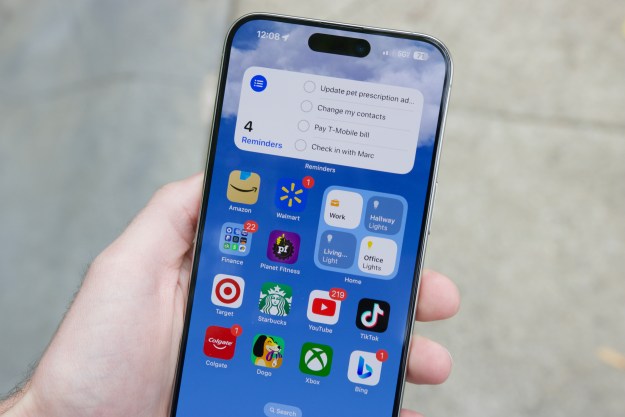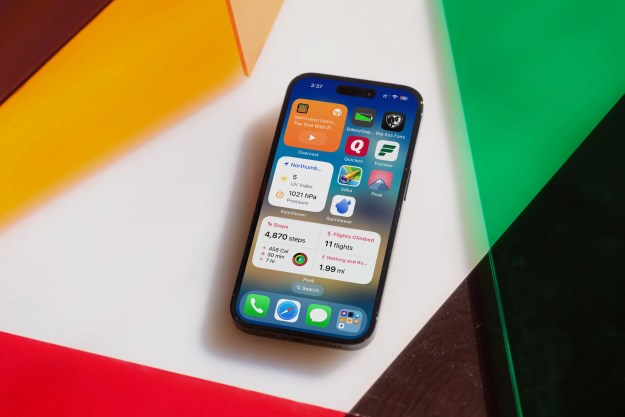As Chromebooks, cheap Windows laptops, and even Android tablets start to drop sharply in price, Apple’s beloved iPad is looking more expensive every day. At WWDC, Apple announced the addition of multi-tasking for the iPad Air 2, starting with iOS 9. This change holds the potential to make the iPad line more valuable by replacing some functions of a regular laptop. But can a tablet really be two devices in one?
One at a time
From the very beginning, users have repeatedly said that iOS isn’t the ideal platform for tablets. The limiting ecosystem is a great fit for iPhones, where a consistently smooth user experience is a top priority, and the screen is only big enough for one app at a time. On the iPad, though, there’s more room to move, and full screen apps feels like a limitation that keeps the device from being more than a glorified web browser or Angry Birds machine.
It didn’t take long for Microsoft to figure out users hated being locked into full-screen apps.
It’s an easy trap to fall into. Just ask Microsoft; it had the same problem with Windows 8’s new “Metro” apps. It didn’t take long for the company to figure out users hated being locked into full-screen apps. The experience wasn’t great for the Microsoft Surface line either. Although it’s now finally gained some traction, early versions of Surface were an epic failure, and Windows itself probably deserves more blame than the hardware.
Users want to be able to line up windows, with their email next to a browser, or their word document next to a music player. They want to briefly open a new window to quickly performance task without jumping out of other apps. They want to switch back and forth between applications with ease.
Yet screen real estate isn’t the only obstacle between the iPad as a tablet and the iPad as a laptop. The real issue is more deeply rooted, and Apple’s own creation.
The monster Apple created
Apple used WWDC 2015 to boast of reaching the mile-stone of 100 billion app downloads, and even quicker to compare the App Store to some of the most influential inventions in history, like the microscope and electricity. That’s serious hyperbole, but it’s true that iOS has become a big deal. The development of iOS and the iPhone is directly responsible for the rapid expansion of the smartphone industry. When it comes to devices with larger screens, though, iOS may be doing more harm than good.

One of the keys to a laptop or desktop is that it runs all of the applications you need access to, and you can find alternatives if it doesn’t. The App Store is great for apps that are meant for mobile or light use applications, but leaves everything else just out of reach. The difference comes in the usability and functionality of those mobile-optimized apps – they just feel watered-down compared to their full, or even web-based counterparts.
You can easily search for and bid on items on eBay, for example, and while you could list an item from the iPad, you’ll probably end up reaching for your laptop instead. When you do, it won’t be because you can’t bid on an item in one window while listing an item in another. It’s because listing an item is easier with a mouse and keyboard.
A tablet just isn’t a laptop
A suite of apps designed explicitly for mobile devices is no substitute for the full desktop enchilada. iPad access to the OS X App Store is unfeasible with the current hardware, but even limited compatibility would go a long way towards making the iPad more relevant. The iPad is also a victim of Apple’s own pricing scheme, which starts laptops at a low enough price point to attract buyers away from the tablet without much thought.
If Apple wants to make the iPad relevant again, it needs to be more like Microsoft.
If you want to step up to an Apple laptop with OS X, you’ll have to shell out at least $900. That’s $200 more than a 64GB iPad Air 2, but the functionality upgrade is a significant one. For that price you gain full OS X compatibility, plus Boot Camp so you can run Windows, access to the Steam marketplace for games, and Adobe Flash in your web browser.
Windows 10 as a universal platform may be the smartest move that Microsoft has made since returning the classic desktop to Windows 8. Now the Surface, Windows Phone, and computers all have access to the same software, and along with it, access to the same productivity tools and compatibility. Whether this will actually play out like Microsoft says it will remains to be seen, but it’s a serious challenge to the way Apple distributes its operating systems, especially when you consider the price difference.
Is it even worth trying?
You won’t often hear people say this, but if Apple wants to succeed in making the iPad relevant again, it needs to be more like Microsoft. As long as iPads are running iOS, they’ll never reach the point of a laptop replacement, because the apps just aren’t designed for the kind of productivity that a full computer can provide. The iPad Air 2 is an amazing tablet, but in a world where the tablet itself is struggling to justify its existence, that’s not enough. A tablet needs to do more when it’s called for — if it’s going to sell at$500 or more, at least.
It’s not about how many apps fit on the screen, or how good the detachable keyboard is, and for Apple to add to those areas misses the point entirely. The bottom line is that no manufacturer has made a device that always works as both a tablet and a computer. There are a number of issues with a one-size-fits-all device that usually end with them not fitting anyone at all, and they stretch from the current hardware all the way down to the operating system. Unless there’s an iPad Pro with OS X or some form of it on the horizon, the iPad’s main use will continue to be watching Netflix while sitting on the toilet.
Editors' Recommendations
- Apple is about to do the unthinkable to its iPads
- An Apple insider just revealed how iOS 18’s AI features will work
- This one thing could make iOS 18 the best iPhone update in years
- This could be our first look at iOS 18’s huge redesign
- Apple’s new iPad Pro and iPad Air just got delayed



